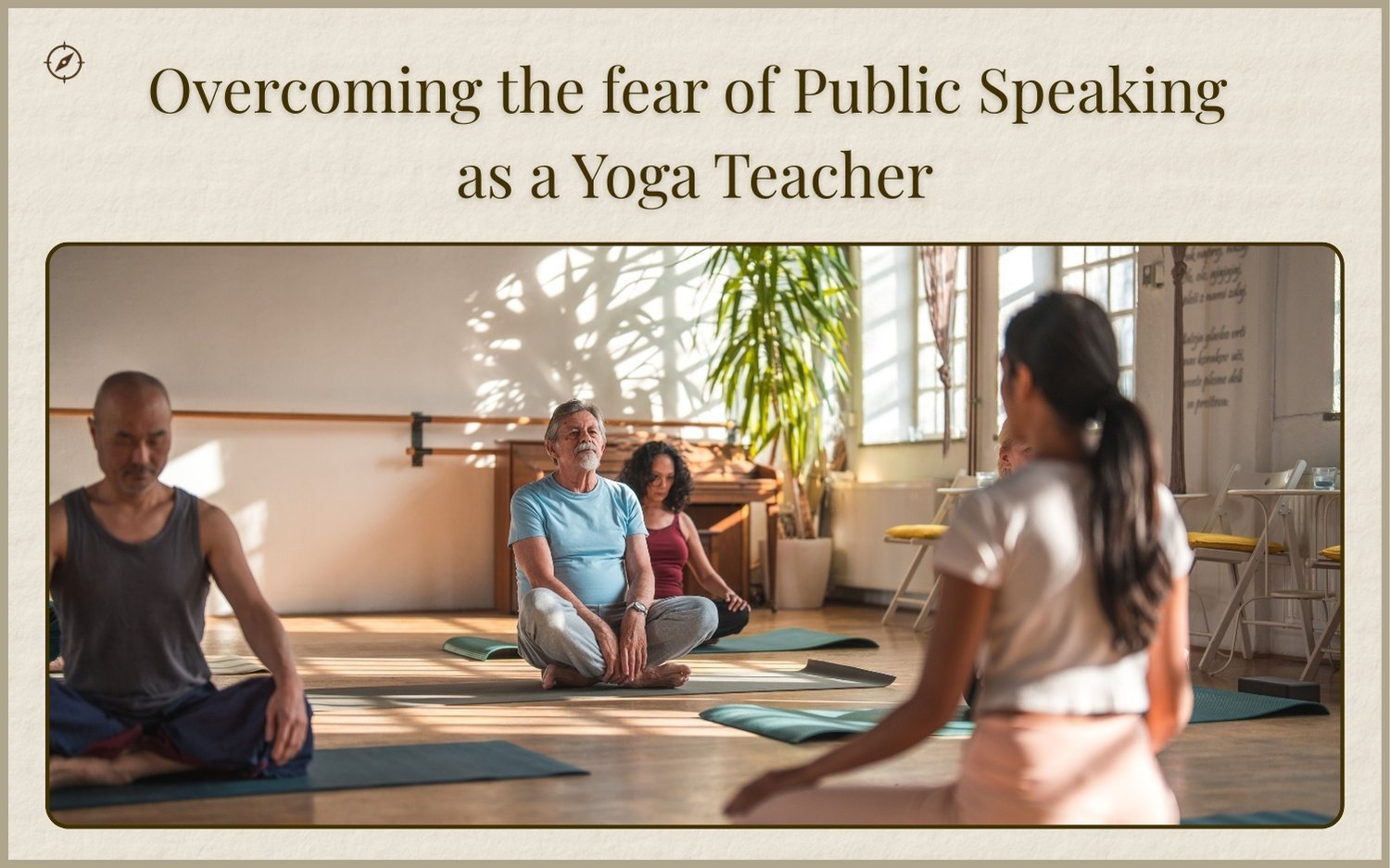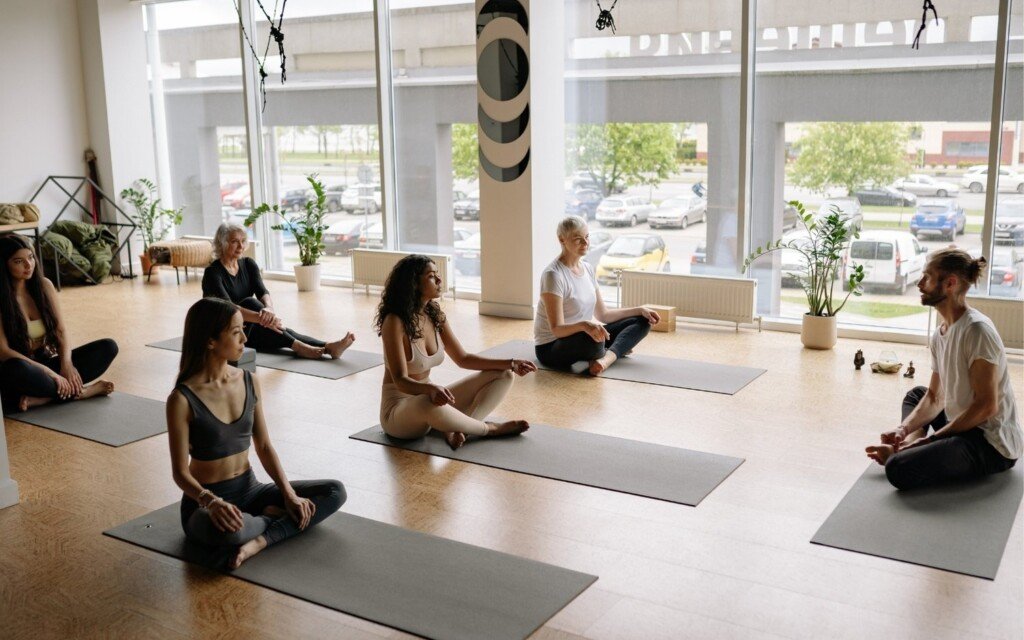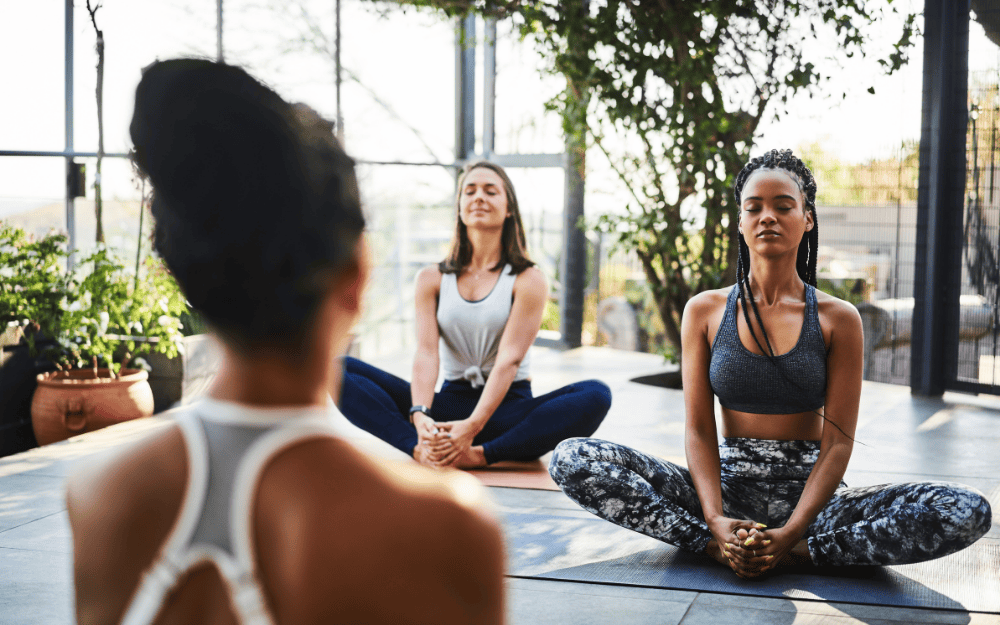Overcoming the fear of Public Speaking as a Yoga Teacher

Teaching your first yoga class can feel more nerve-wracking than taking your final exam in teacher training. You’ve spent weeks learning anatomy, sequencing, and cueing, but when you’re suddenly at the front of the room, all eyes on you, your hands might shake, your voice might tremble, and your mind might go blank. The good news is that stage fright is not a sign you’re unprepared. It’s simply your nervous system gearing up for something important.
With the right strategies, you can turn those jitters into focused energy and teach your class with confidence. In this guide, you’ll learn practical ways to calm your mind, center your breath, and lead with presence so you can deliver your sequence without freezing up.
This article is part of The Ultimate Guide to Yoga Teacher Training: Challenges and How to Overcome Them
If you haven’t read the main guide yet, start there to explore all 15 topics and get the complete picture for your YTT journey.
Plan and Practice Your Sequence
Nothing builds confidence like knowing exactly what you’re going to teach. Practice your entire sequence, including verbal cues, several times before you step into the studio. If possible, run through it with a friend or family member. The more your body and mind remember the flow, the less room there is for anxiety to take over.
Tips:
- Practice teach your sequence out loud, not just in your head
- Time your class so you know it fits the schedule
- Practice any tricky transitions until they feel automatic
Bring Notes
You don’t have to remember every single posture by heart. Keep a simple outline or cue sheet nearby — on your mat, a clipboard, or tucked discreetly at the front of the room. Just knowing your notes are there can be a huge mental safety net.
A quick glance is enough to keep you on track without breaking the flow. Students will not mind; they’ll appreciate your clarity far more than a shaky, uncertain delivery.
Create a Pre-Class Grounding Ritual

Rushing from daily life straight into teaching can leave your nervous system on high alert. Instead, take 2–5 minutes to center yourself before you start.
Ideas for a grounding ritual:
- A few rounds of slow, deep breathing
- Repeating a calming affirmation
- Light stretches or gentle movement
- Using a grounding essential oil like sandalwood or lavender
This simple habit signals to your mind and body: I am ready. I’ve got this.
Connect With Students Before Class
Arriving early to greet people can transform the energy in the room. By chatting casually with students before you start, you shift the dynamic from “performer and audience” to “guide and community.”
Ask about their day, compliment their mat, or thank them for coming. When students feel welcomed, you’ll feel more at ease and your class will flow more naturally.

Remember You’re Not Alone
Some of your students or fellow trainees might be nervous too. Reminding yourself that everyone is human (including you) eases the pressure to be flawless. Mistakes are part of the process, and your authenticity will make you more relatable. Always try to make it about serving the people infront of you, that way you take your focus off of yourself.
Prepare a “Reset Pose”
If you blank out or lose your train of thought, have a go-to posture that gives you a moment to regroup. Child’s Pose works beautifully: students settle into rest while you take a breath, glance at your notes, and pick up where you left off.
Start Small and Build Up
If your nerves are intense, begin with smaller, familiar groups — fellow trainees, friends, or family. As you gain positive experiences, gradually step into larger or unfamiliar classes. Confidence grows through repetition.
Manage Your Self-Talk
Write down your fears (“What if I forget my sequence?” “What if I make a mistake?”) and turn them into affirmations:
- “It’s okay to glance at my notes.”
- “Mistakes are part of learning.”
- “It’s fine to say ‘I don’t know’ and follow up later.”
Repeat these before class until they start to feel true.
Focus on Breath… Yours and Theirs
Your breath sets the tone for the room. If you breathe slowly and steadily, your voice steadies and students will naturally follow your rhythm. Guide them through breath cues often; it keeps everyone anchored and connected.
Progress Over Perfection
Confidence is built one class at a time. Instead of aiming to be flawless, aim to improve with each session. Over time, the shakes fade, your delivery smooths out, and you start enjoying the experience rather than enduring it.
“There will be glimpses of perfection… and with time and practice, the glimpses will turn into a gaze”
Final Thoughts
The fear of public speaking is common for new yoga teachers but it doesn’t have to stop you from sharing what you’ve learned. With preparation, grounding rituals, and a compassionate mindset, you can turn nervous energy into confident leadership.
If you want more tips to make your first months of teaching smoother, download the Yoga Teacher Training Survival Kit — your step-by-step resource for thriving before, during, and after YTT.
This article is part of The Ultimate Guide to Yoga Teacher Training: Challenges and How to Overcome Them
You might also like:
- The 5 Fears Every Yoga Teacher Trainee Has (and How to Beat Them)
- The Mental Checklist for Starting Yoga Teacher Training
